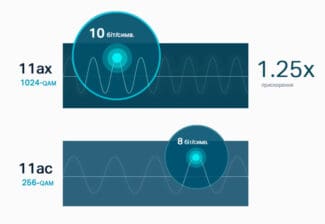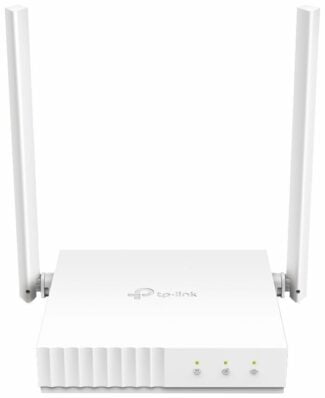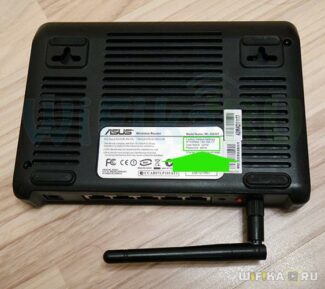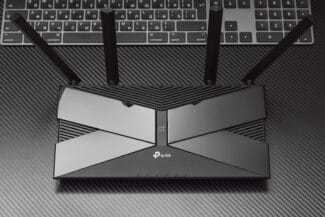2. Put a bunch of repeaters creating their own subnets (poorly automated, you need to switch manually);
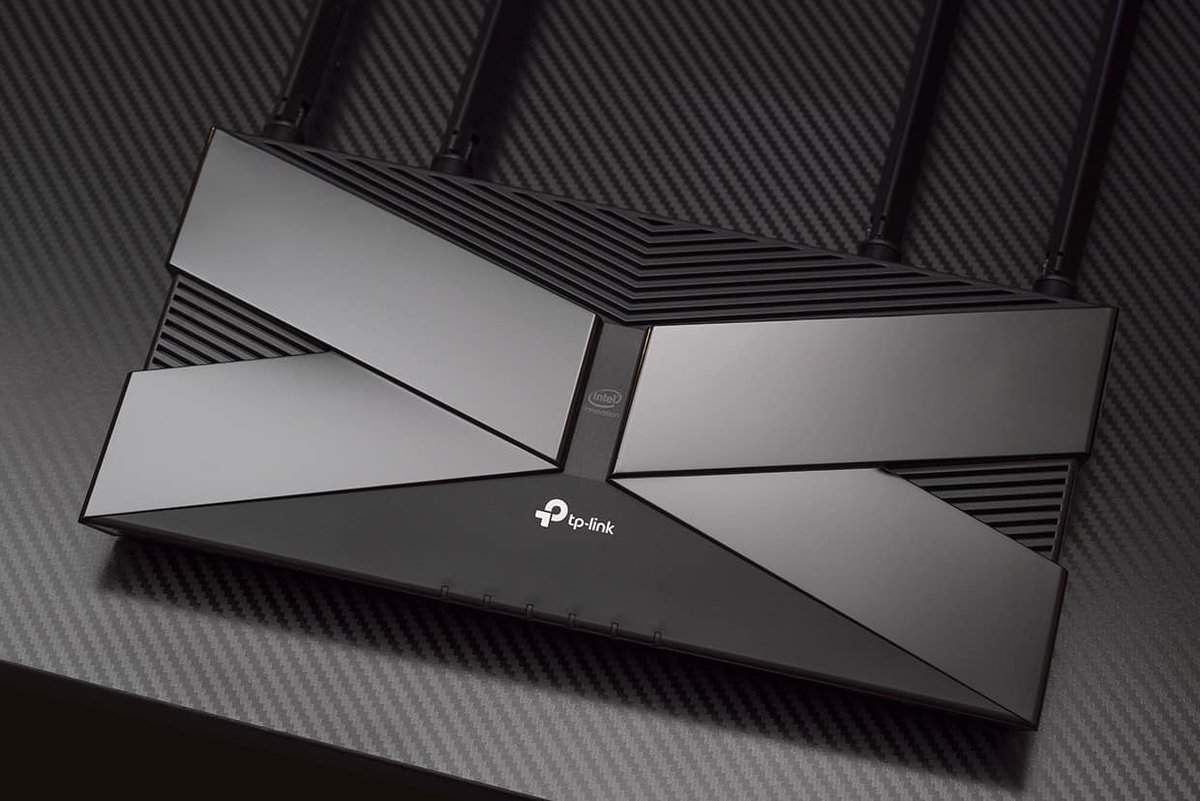
- Taking apart the first TP-Link devices with Wi-Fi 6: Archer AX6000 router and Archer TX3000E adapter
- New in Wi-fi 6
- BSS Coloring: Helps reduce the impact of neighboring APs
- 1024-QAM modulation: transmits more in the same spectral band
- New challenges for wireless networks
- New Wi-Fi 6. For all devices at once
Taking apart the first TP-Link devices with Wi-Fi 6: Archer AX6000 router and Archer TX3000E adapter
The number of devices and requirements for data transfer speeds in wireless networks are increasing day by day. And the "denser" the networks, the more obvious are the disadvantages of the old specifications of Wi-Fi: the speed and reliability of data transmission falls. To solve this problem, a new standard – Wi-Fi 6 (802.11ax) – was developed. It allows to develop wireless connection speed up to 2.4 Gbit/s and to work simultaneously with a large number of connected devices. We have already implemented it in Archer AX6000 router and Archer TX3000E adapter. In this article we will show you their capabilities.
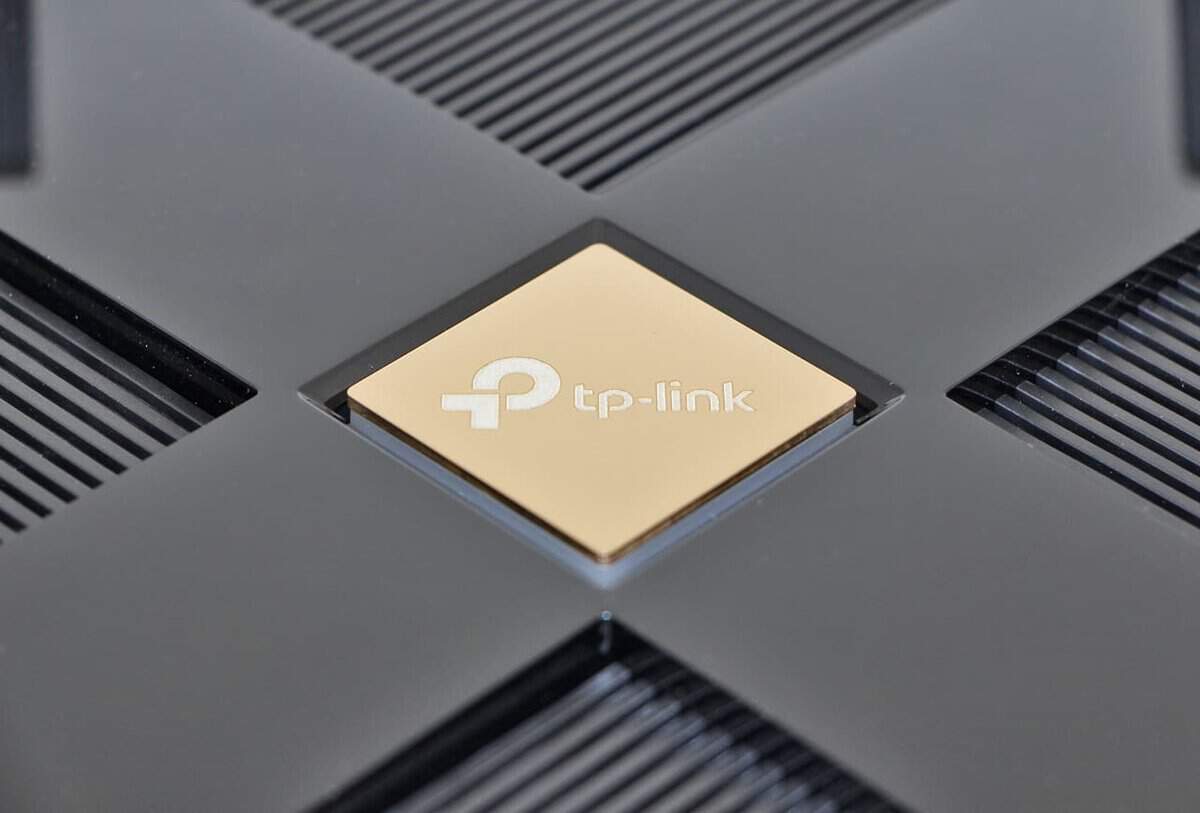
New in Wi-fi 6
The previous standard, Wi-Fi 5 (802.11ac), was developed 9 years ago, and many of its mechanisms are not designed for a large number of connections. As the number of devices grows, the speed of each of them drops, because there is mutual interference at the physical level and too much time is spent on waiting and negotiating the transmission.
All innovations of Wi-Fi 6 are just aimed at improving the operation of a large number of devices in a limited area, increasing the transmission speed for each of them. This problem is solved simultaneously in several ways, which boil down to increasing the efficiency of frequency spectrum use and reducing mutual interference of neighboring devices. Here are a few key ideas.
BSS Coloring: Helps reduce the impact of neighboring APs
When multiple APs overlap, they interfere with each other's ability to initiate transmissions. All because in Wi-Fi networks access to the environment is implemented in accordance with the mechanism of CSMA / CA (multiple access with carrier control and collision avoidance): the device periodically "listens" to the frequency. If it is busy, the transmission is delayed, the frequency is listened to after some more time. Thus, the more devices are connected to the network, the more each of them has to wait for its turn to transmit a packet. If there is another wireless network nearby, listening for a frequency will indicate that the transmission medium is busy and the transmission will not begin.

Wi-Fi 6 came up with a way to separate "their" transmission from the "outsider's" transmission – BSS Coloring. Each packet transmitted over the wireless network is marked with a certain color; the transmission of foreign packets is simply ignored. This greatly optimizes the process of fighting for the transmission medium.
1024-QAM modulation: transmits more in the same spectral band
In Wi-Fi 6 implemented a quadrature modulation of a higher (compared with the previous standard) level: 1024-QAM, available in the new coding methods MCS 10 and 11. It allows 10 bits of information to be transmitted in a packet instead of 8. At the physical layer this increases the transmission speed by 25%.
New challenges for wireless networks
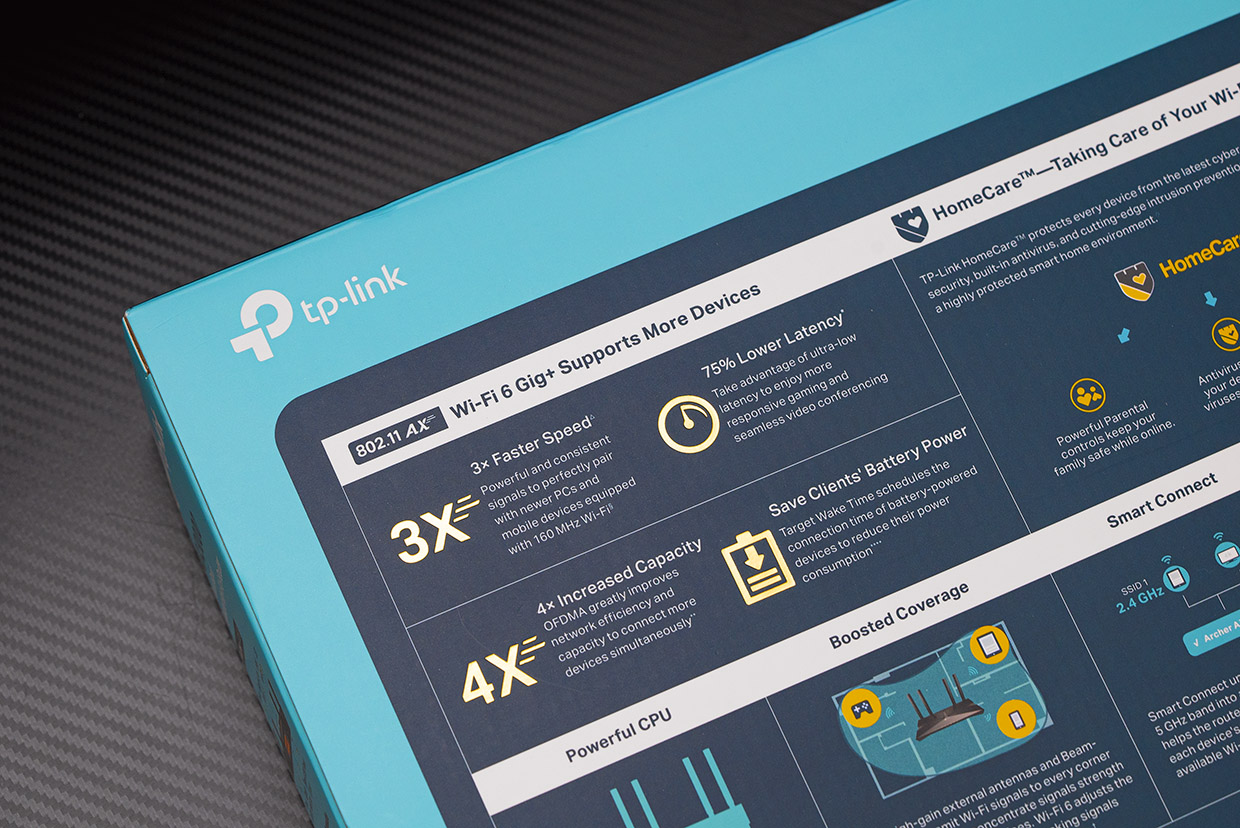
In the late 2000s there was a boom in wireless networks: every provider started bringing home a router in addition to cable, and the number of routers began to grow exponentially.
Backbone networks were being upgraded, and so were the volumes and quality of the content being transmitted. At the time, most devices were broadcasting on 2.4 GHz, and this band gradually began to feel the congestion that was reducing the quality of the connection.
The move to the 5 GHz band brought new opportunities for data speeds, but it was not a panacea in our ironclad boxes. Still, wireless communication does not like metal barriers, often reducing the coverage area.
The abundance of fixtures in the walls of ordinary Russian apartments (indeed, in the West there are fewer of them, and there are fewer issues with the Internet because of its price) is not the only problem with the 5-gigahertz range.
When creating a Wi-Fi network, "dead zones" can form, in which the quality of signal reception deteriorates. They are there for 2.4 GHz, but to a lesser extent: its speed drops in such places by half – but at 5 GHz at a considerable distance the signal almost completely disappears.
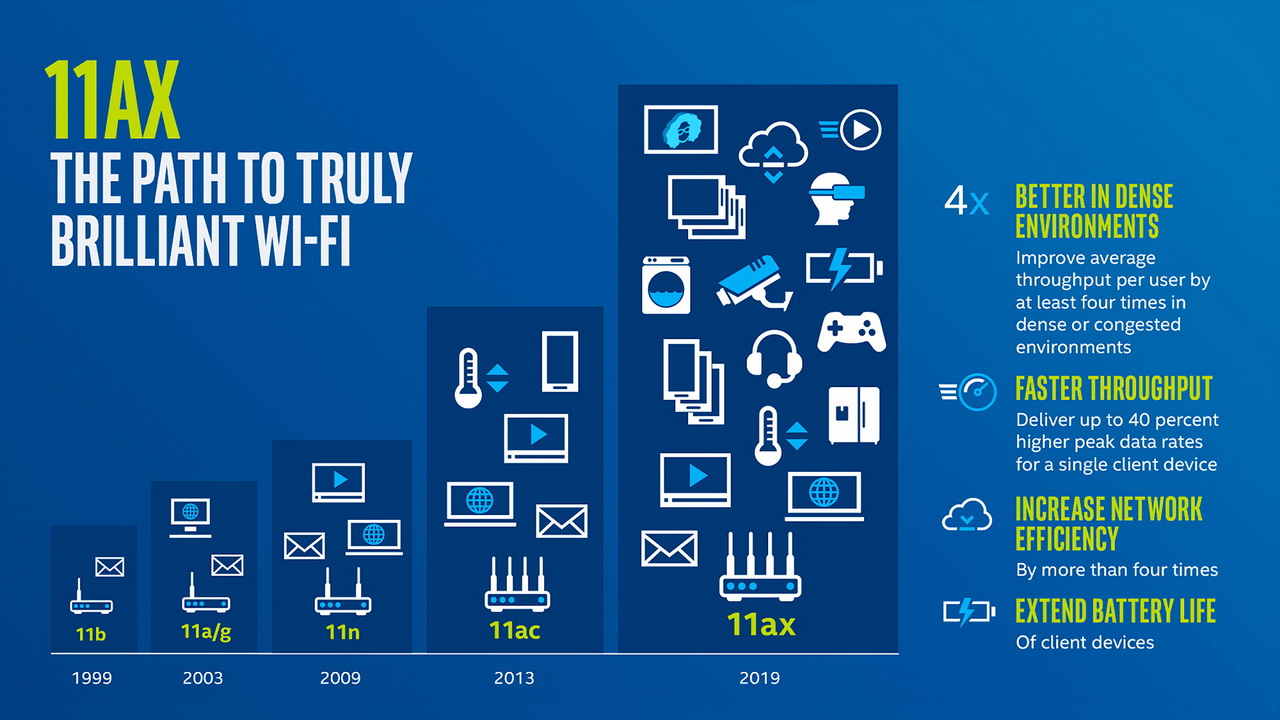
Development of the 801.11 series of wireless standards
Finally, the introduction of radio modules in every conceivable device has finally loaded home networks: turning on the kettle in the kitchen via Bluetooth, looking out the window with the camera via Wi-Fi and archiving photos on the home server at the same time is very convenient.
But it is not for nothing that the first routers for self-assembly of smart homes immediately offered to give the 5 GHz band to the needs of automation and add repeaters to taste in order to somehow separate networks, avoiding conflicts.
When all home devices work without network traffic/channel/range restrictions, problems can start: a large number of receivers and transmitters "block" the signal to each other, "clogging up" the channel for themselves and their neighbors. And then there are the neighbors' gadgets behind the walls.
New Wi-Fi 6. For all devices at once

A schematic of how Wi-Fi 6 differs from Wi-Fi 5
To solve the basic problems of home wireless networks and the ability to create large-scale public access points without significant financial costs, EEEI has developed an updated IEEE 802.11ax standard, also known as Wi-Fi 6.
It uses the existing 2.4 and 5 GHz spectrums, but expands into the 1 to 7 GHz bands as needed. It also supports a lot of very important technologies.
? MU-MIMO 8×8 allows you to expand the number of streams for receiving and transmitting up to 8 simultaneously against 4 in Wi-Fi 801.11ac.
? OFDMA allows you to share one router communication channel among several connected devices, eliminating conflicts and the possibility of "blackout", reducing the speed and quality of communication.
? BSS coloring, "coloring" the signal from devices connected to a particular router, helps avoid interference from other (other people's, neighbors') gadgets working on the same channel.
? Target Wake Time (TWT).allows mobile devices to hibernate, saving battery power.
? Network allocation vector (NAV) allows you to monitor packet transmission time of other devices, both on your network and on neighboring networks, reducing the power consumption of gadgets.
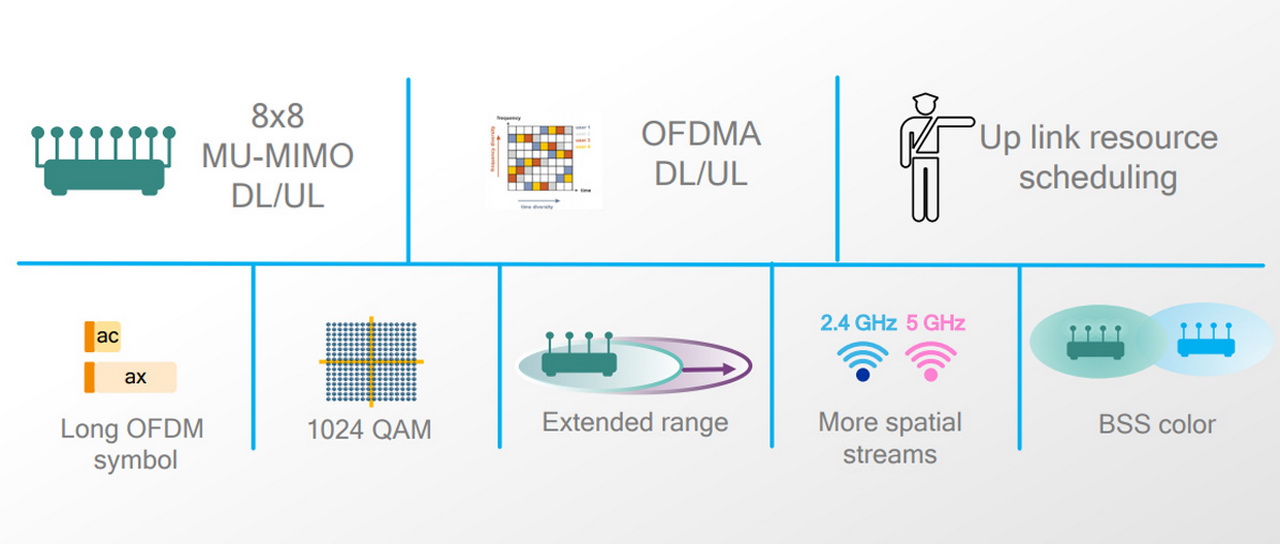
The solution to all problems – implementation of new technologies of WI-Fi 801.11ax standard
What does it do for the average user? The simplest thing is that the speed with 801.11ax Wi-Fi goes up to 37% (for each connected gadget individually!), and its limit is approaching 9.6 Gbps.
Read More:
